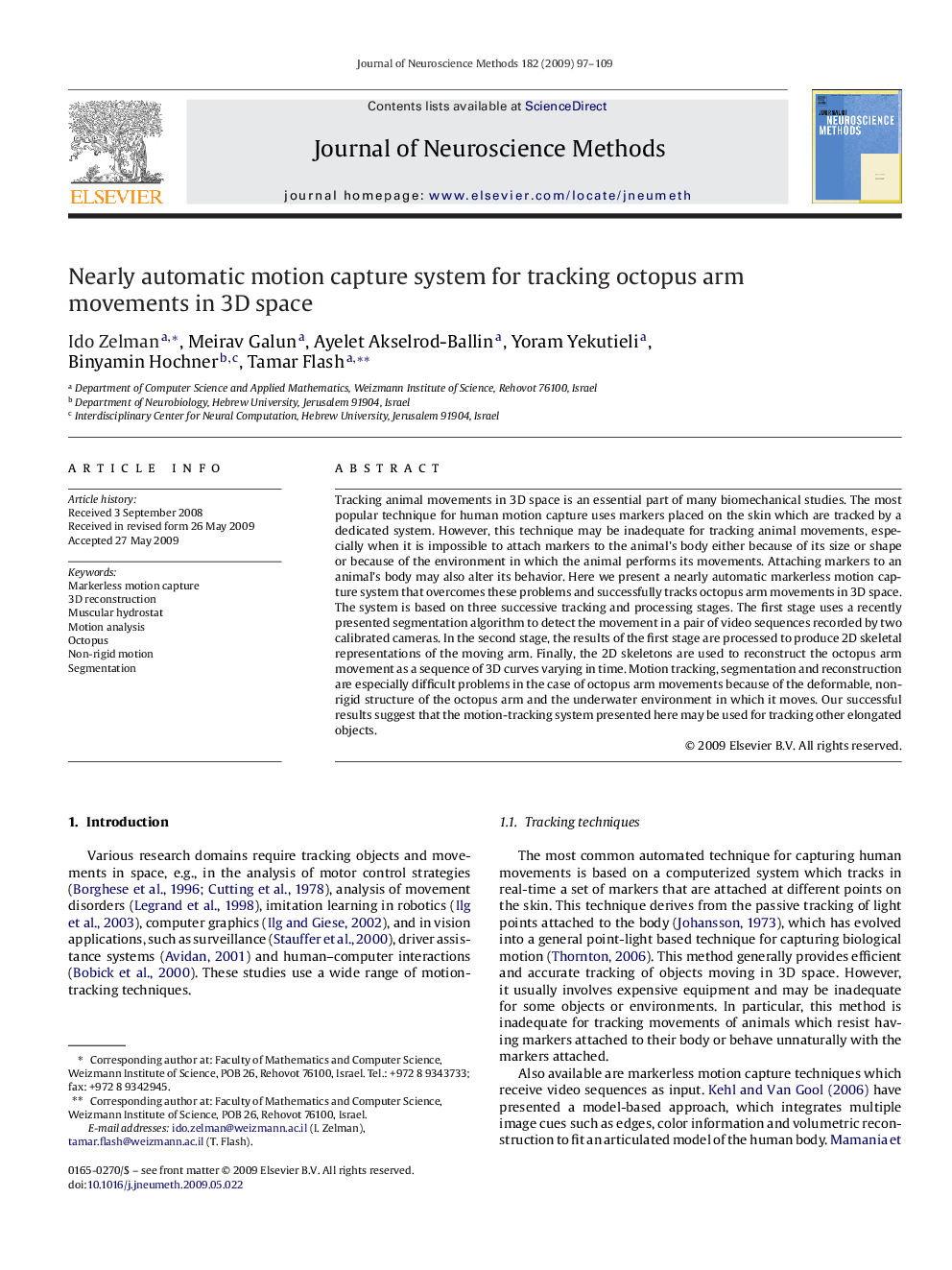| Article ID | Journal | Published Year | Pages | File Type |
|---|---|---|---|---|
| 4335749 | Journal of Neuroscience Methods | 2009 | 13 Pages |
Tracking animal movements in 3D space is an essential part of many biomechanical studies. The most popular technique for human motion capture uses markers placed on the skin which are tracked by a dedicated system. However, this technique may be inadequate for tracking animal movements, especially when it is impossible to attach markers to the animal's body either because of its size or shape or because of the environment in which the animal performs its movements. Attaching markers to an animal's body may also alter its behavior. Here we present a nearly automatic markerless motion capture system that overcomes these problems and successfully tracks octopus arm movements in 3D space. The system is based on three successive tracking and processing stages. The first stage uses a recently presented segmentation algorithm to detect the movement in a pair of video sequences recorded by two calibrated cameras. In the second stage, the results of the first stage are processed to produce 2D skeletal representations of the moving arm. Finally, the 2D skeletons are used to reconstruct the octopus arm movement as a sequence of 3D curves varying in time. Motion tracking, segmentation and reconstruction are especially difficult problems in the case of octopus arm movements because of the deformable, non-rigid structure of the octopus arm and the underwater environment in which it moves. Our successful results suggest that the motion-tracking system presented here may be used for tracking other elongated objects.
